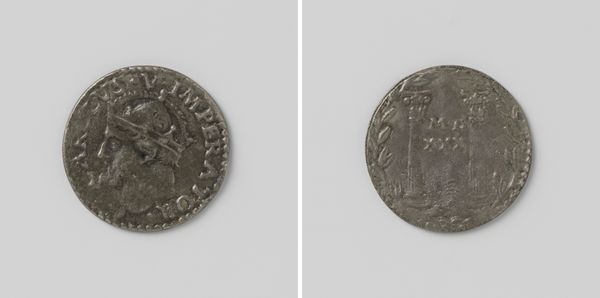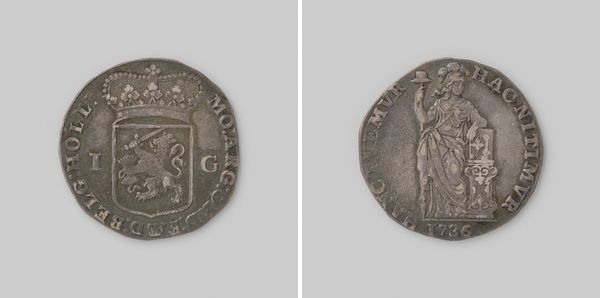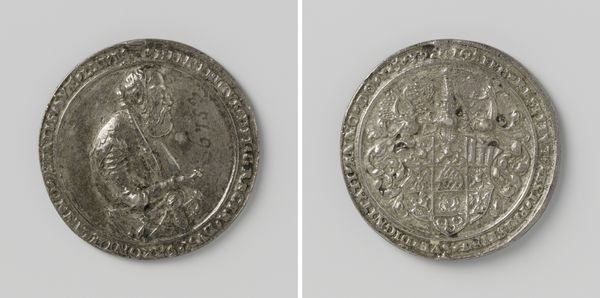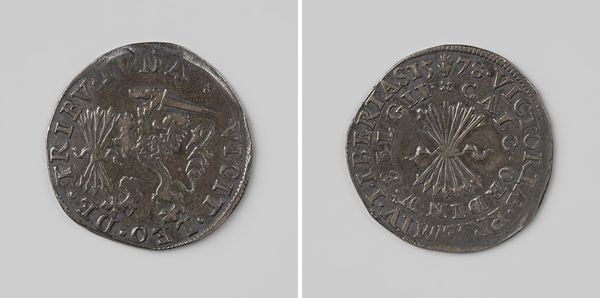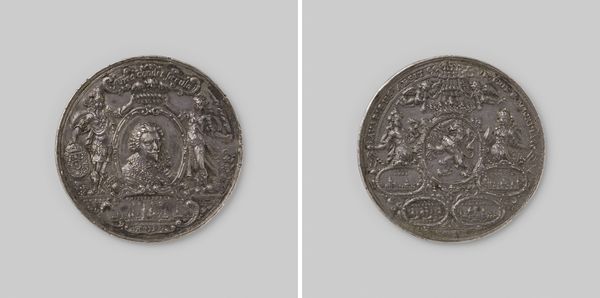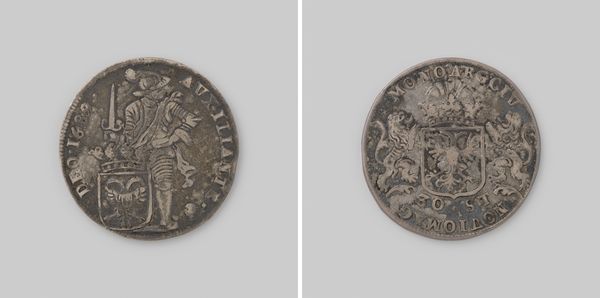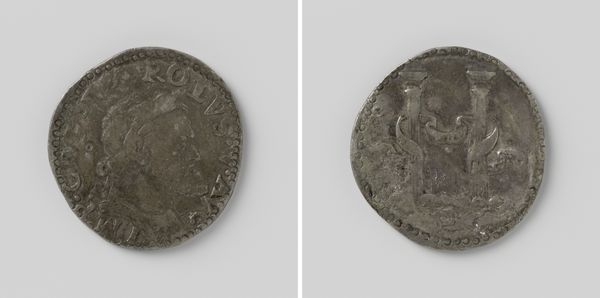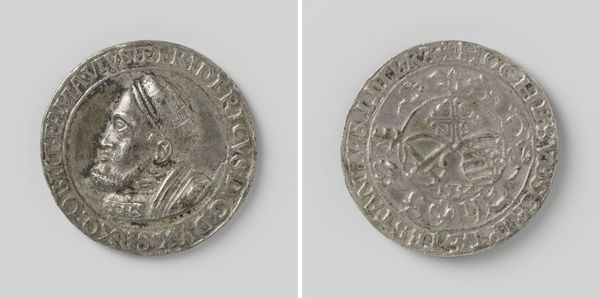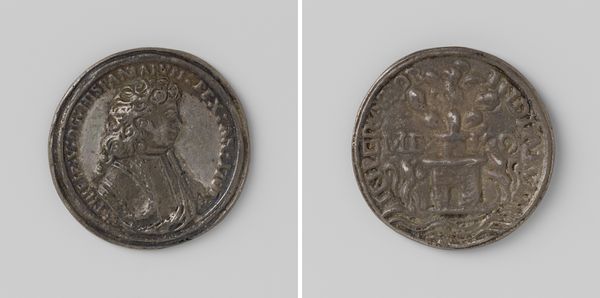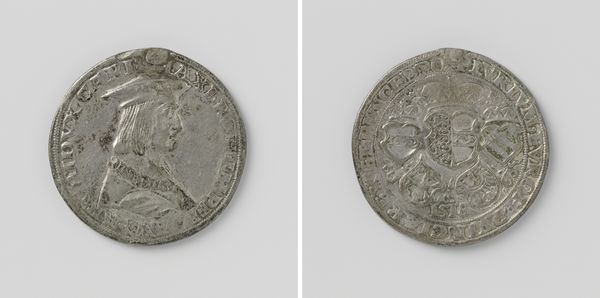
print, metal, sculpture, engraving
# print
#
metal
#
sculpture
#
ancient-mediterranean
#
sculpture
#
decorative-art
#
engraving
Dimensions: diameter 4.1 cm, weight 31.23 gr
Copyright: Rijks Museum: Open Domain
Curator: Here we have a Westfriese "drie gulden" – that is, a three guilder coin – from 1791. It provides an interesting insight into the region’s economic and political landscape at the time. Editor: The immediate impression is how worn this little piece of metal is. It tells a story of use, changing hands repeatedly, carrying value. I'm drawn to the cool, smooth feel I imagine it must have. Curator: Exactly! Think about who handled it: merchants, farmers, everyday people in West Friesland navigating the late 18th century. Coins like this are tangible links to the past and illustrate wealth distribution. Editor: And the making of it. Someone engraved the die, another hammered the metal. What were their working conditions? How did their craft contribute to the West Frisian economy? The images suggest something more than simple exchange. Curator: Certainly. On one side is the crowned West Frisian coat-of-arms with a lion, symbolizing regional power. On the other side we see a female figure with an alter, an allegory about West Friesland's independence and freedoms within the republic. The surrounding Latin phrase makes reference to peace and justice. Editor: So it’s not just currency; it's propaganda cast in precious metal! That’s really interesting because the texture of the material combined with the imagery creates layers of cultural meanings: national identity and class aspiration cast into the artwork through repeated labor, literally pressed into coin over time by different machines and people! Curator: Precisely. Coins also participated in solidifying identity, defining belonging. Their imagery became ingrained in everyday life, in financial exchanges that reflected not just individual wealth, but West Frisian autonomy within the broader Dutch Republic. Editor: Considering its age, you begin to see that such things outlive everyone that once possessed them; their endurance grants special cultural powers that make coins more interesting than other artifacts from past economies. Curator: I agree, reflecting on the long trajectory, this simple coin really showcases the blend of material culture and socio-political narrative that made this area tick, really offering a microhistorical glimpse into West Friesland's ambitions and identity in 1791. Editor: For me, it speaks to how labor and material contribute to creating and understanding symbols that embody wealth, identity, and memory.
Comments
No comments
Be the first to comment and join the conversation on the ultimate creative platform.
